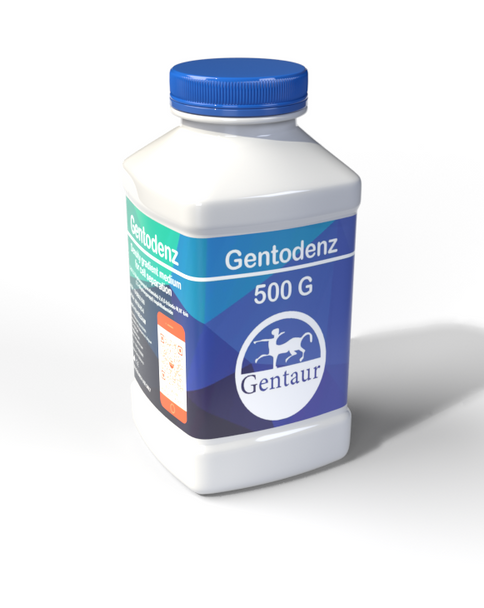Description
Gentodenz® is a non-ionic tri-iodinated derivative of benzoic acid with three aliphatic hydrophilic side chains. The systematic name of Gentodenz is 5- (N-2, 3-dihydroxypropylacetamido)-2, 4, 6-tri-iodo-N, N'-bis (2, 3 dihydroxypropyl) isophthalamide.
CHARACTERISTICS
Gentodenz has a molecular weight of 821 and a density of 2.1 g/ml. Gentodenz is non-ionic, non-taxie and is very water soluble. Stock solutions of over 80 % (w/v) can be prepared. Gentodenz is also soluble in formamide and dimethyl formamide, thus it is possible to prepare non-aqueous denaturing gradients of Gentodenz. Aqueous solutions of Gentodenz have a very high water activity. Most particles will therefore be fully hydrated in solutions of Gentodenz and will band at a low density. Solutions of Gentodenz are stable to heat and may be autoclaved, stability to autociaving is enhanced by the addition of small amounts of Tris and EDTA. Solutions of Gentodenz are very resistant to bacterial degradation and Gentodenz is not metabolized by mammalian cells.
The concentration and density of solutions of Gentodenz can easily be determined by measuring the refractive index. The relationship between cancentration, refractive index (η) and density is linear and can be formulated:
Concentration, % (w/v) = 607.75 η - 810.13
Density (g/ml) = 3.242 η - 3.323
Before using this equation the refractive index must be corrected for the presence of buffer or salt in the gradient medium.
Gentodenz is a non-particulate medium; therefore the distribution of cells in a gradient can be determined using a haemocytometer, elec- tronie particle counter or by light-scattering measurements using a spectrophotometer.
STABILITY AND STORAGE
Gentodenz in solid form is stable for aperiod of 5 years when stored at room temperature and protected from light. Gentodenz in solution is stable for 5 years provided that it is kept sterile and protected from light. Prolonged exposure to direct sunlight leads to release of iodine from the molecule. This effect is negligible when working with these solutions on a day to day basis.
APPLICATIONS
Gentodenz can be used in the fractionation of nucleic acids, proteins, polysaccharides and nycleoproteins. Moreover most types of subcellular organelles can be successfully isolated on gradients of Gentodenz under either isotonic or mildly hypertonic conditions. Gentodenz has a low osmolality, and is non-toxic, thus making it an ideal medium for the separation of intact living cells. The low viscosi-ty of Gentodenz in parallel with it's non-ionic characteristics has pro- ved Gentodenz to be useful in the isolation and purification of viruses and bacteria.
FORMATION OF GRADIENTS
Gradients of Gentodenz can be generated in the following ways:
1. Formed in situ by centrifugation (selt-forming gradients).
2. Layering solutions of the desired concentration into an appropriate centrifuge tube and allowing the solutions to diffuse. Using Gentodenz isotonic solution gradients can be simply prepared within 45 minutes (see next section).
3. Freezing and thawing.
4. Gradient mixers.
PREPARATION OF ISOTONIC GRADIENTS OF GENTODENZ
Gradient solutions for the preparation of essentially iso-osmotic Gentodenz gradients has been devised and these can be prepared using an iso-osmotic solution of Gentodenz which contains 27.6% (w/v) Gentodenz (density = 1.15 g/ml) made up in buffered medium. This solution may be diluted to desired concentration by using a buffered diluent containing either sucrose or NaCI as osmotic balancer.
The composition of these diluents are as folIows:
0.75 g NaCI or 7.45 g sucrose
dissolved in 100 ml 5 mmol/l Tris-HCI (pH 7.5) containing 3 mmol/l
KCI and 0.3 mmol/l CaNa2 EDTA.
The relationship between density and refractive index (η) can be formulated:
NaCI diluent Sucrose diluent
Density = 3.287 η - 3.383 Density = 3.410 η - 3.555
COMPATABILITY WITH SOME WIDELY USED ASSAYS
Gentodenz does not interfere with the orcinol and diphenylamine reactions for estimation of nucleic acids, nor with the very sensitive dyebinding assays for protein and DNA. Polysaccharides and sugars can be determined in the presence of Gentodenz using the phenoJ/H2S04 assay. Fluorimetric assays of nucleic acid and proteins can also be carried out in the presence of Gentodenz.
Gentodenz does not interfere with most assays for the marker enzymes of subcellular components, also most commercial scintillants are compatible with Gentodenz.
REMOVAL OF GENTODENZ FROM SAMPLES
Gentodenz can be removed tram samples by dialysis, ultrafiltration and gel filtration. Cells, subcellular organelles and other particulate matter can be separated from Gentodenz by centrifugation without the risk of contaminating the pellet with Gentodenz.
Gentodenz is readily soluble in both aeidic and ethanolic media. Thus in a number of cases samples can be isolated free of Gentodenz by precipitating the sampIe with trichloroacetic acid or ethanol.
ORDERING INFORMATION
Gentodenz prod. no. 19-DENZ-500, 1 x 500 g
2 Reviews
-
Ease of Use
Gentodenz is relatively straightforward to use, with clear instructions provided by Gentaur. While the preparation of density gradient solutions may require some practice, especially for beginners, the protocol is well-documented and can be easily optimized for specific applications with minimal effort.
-
Excellent
The experience of buying products from Gentaur is very pleasant and I can say that it is one of my wonderful experiences.






